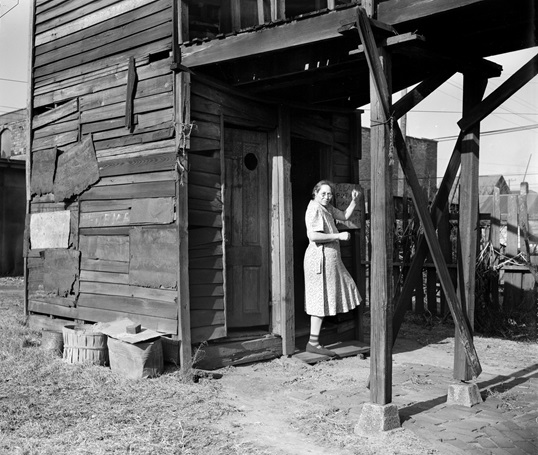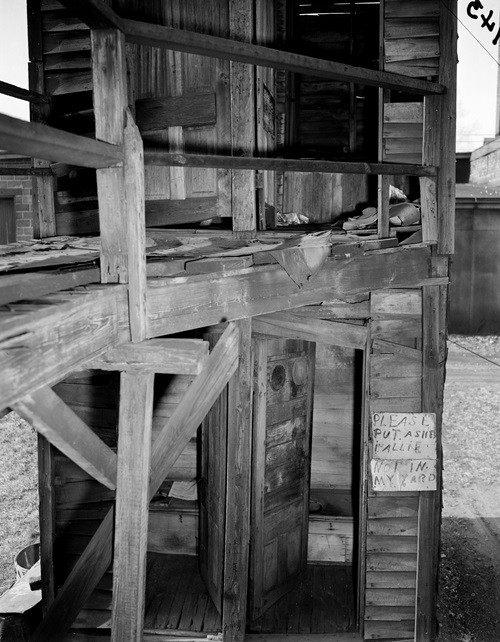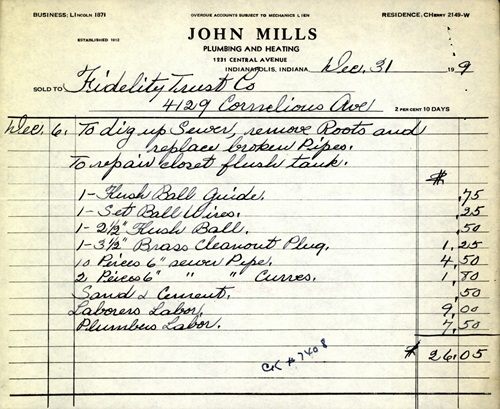
Plan your visit
Sewers and Privies and Outhouses, Oh My!
February 16, 2024

For many, the idea of relying on an outhouse/privy for bathroom needs seems less than glamorous, that is, unless you have ever needed to replace your home’s sewer system. When you’re without indoor plumbing and are forced to find creative ways to relieve yourself, an outhouse seems like an oasis.


A two-story Privy located behind a house that once existed on 458-460 Agnes Street, 1940. The catwalk connected the privy to the second story of the house. Indiana Historical Society, P0569
In August, my fiancé and I closed on our first home. We fell in love with the home, in part, because of its charm. It was built in 1942 and has its original hardwood floors, built-ins, and arched doorways. We were delighted that the home had so much of its originality preserved. However, we failed to consider how un-charming its original sewer system, made from cast iron and clay pipes, could be. Four months into home ownership, we were confronted with the cold hard truth that we needed a new sewer.

A receipt from John Mills Plumbing and Heating for the replacement of a sewer line, 1939. Madam C.J. Walker Collection, Indiana Historical Society.
The history of sewers in Indianapolis is, well, a messy one. Early Indianapolis used above-ground wooden gutters and culverts to move waste to the White River. This system was ineffective and often led to unsanitary conditions on roadways and in waterways around the city. Indianapolis residents soon demanded a more effective method for removing sewer waste.

Raymond Street sewer on the White River, ca. 1900. Indiana Historical Society, M1400.
The city started construction on an updated sewer system in 1870. This project was never completed. The White River’s continual pollution pushed communities to seek legal action against the dumping of sewer waste in the river. In 1915, Indiana State legislators passed a bill allowing cities to finance sewer treatment plants. The Belmont Sewage disposal plant, the first large, activated sludge water treatment plant in the United States, opened in 1925 on Indy’s Southwest Side. A second facility wasn’t opened until 1966. This plant, the Southport Treatment Plant, was updated in 1981 to accommodate further needs.
In 2011, Citizen’s Energy Group took over Indy’s water utilities. At this time, the city still used a combined sewer and wastewater system. This was no longer an adequate solution because if heavy rains hit Indianapolis, sewage would overflow into places where no one wanted sewage to overflow. Thus, Citizen’s started on the DIGINDY tunnel system which was designed to reduce the overflow of sewage into waterways.
sources: https://indyencyclopedia.org/public-utilities/









